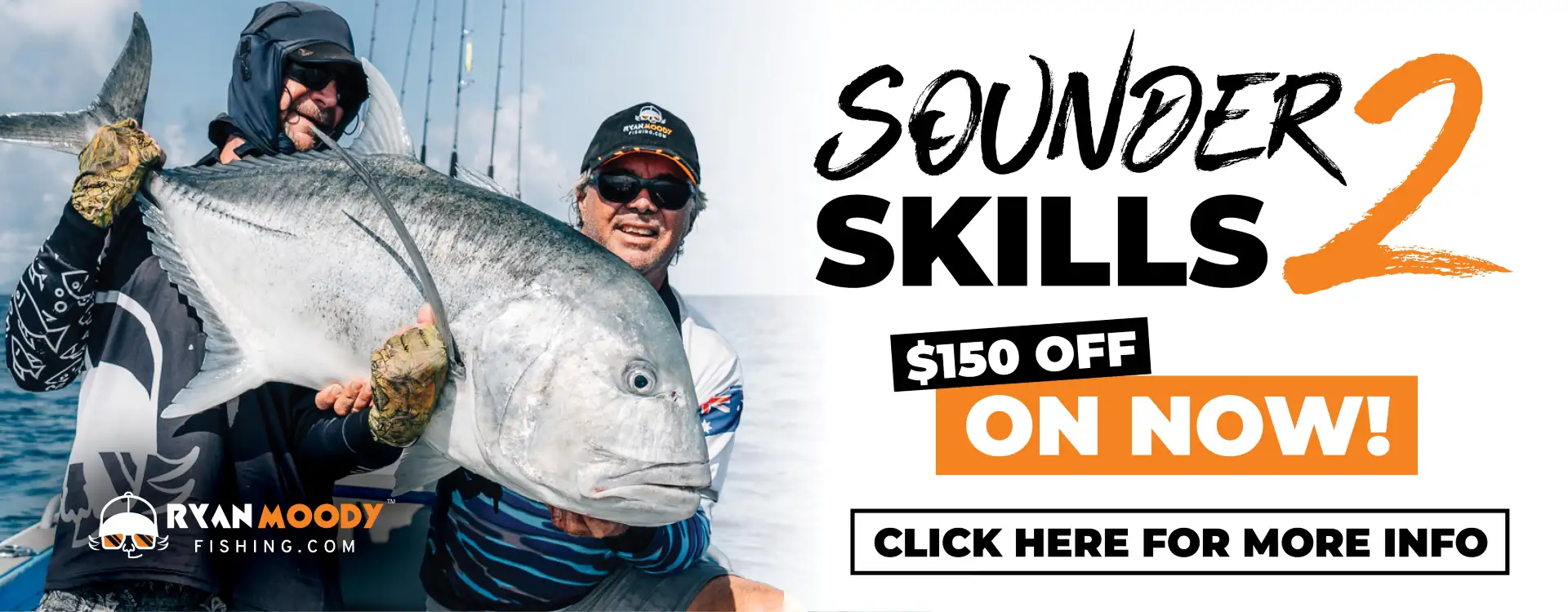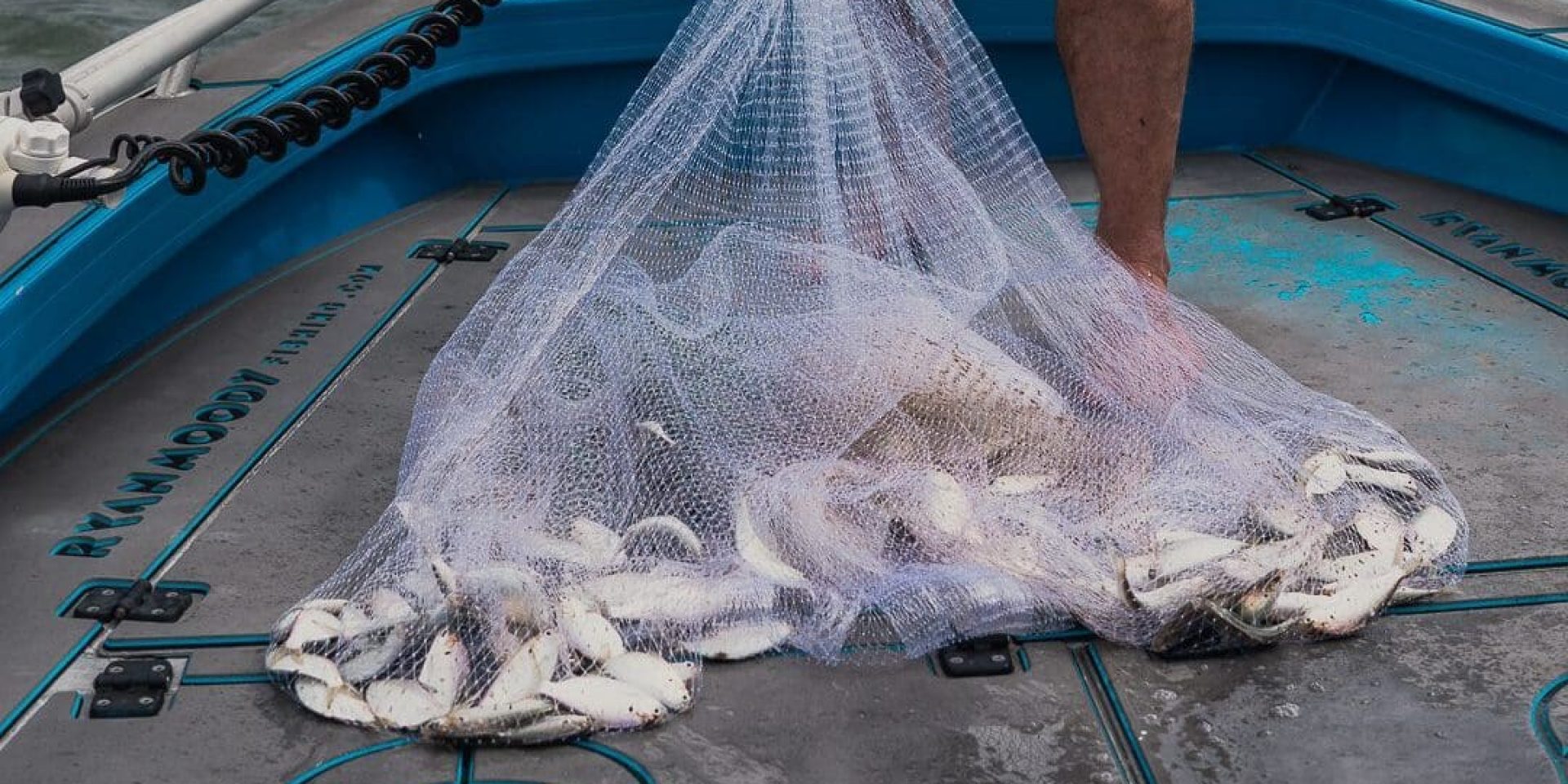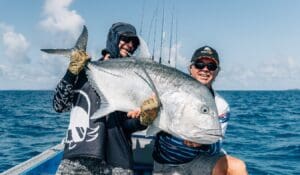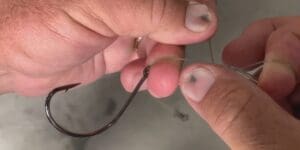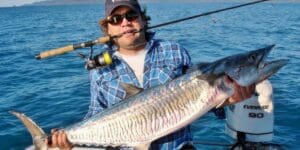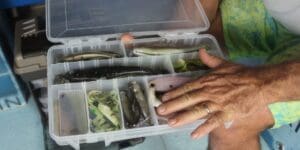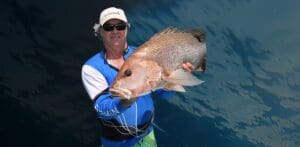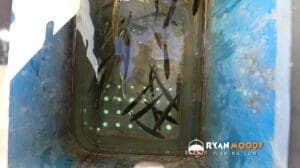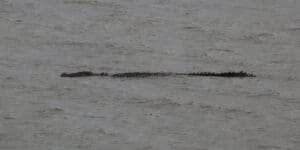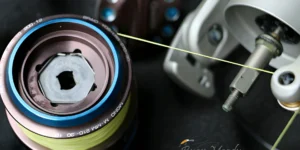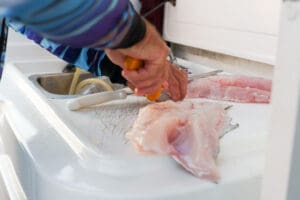Choosing the right cast net or the best cast net to catch your target species comes down to several factors.
- Type of cast net (horses for courses)
- Type and size of bait fish you hope to catch
- Net quality (cheapie nets can tend to fall apart).
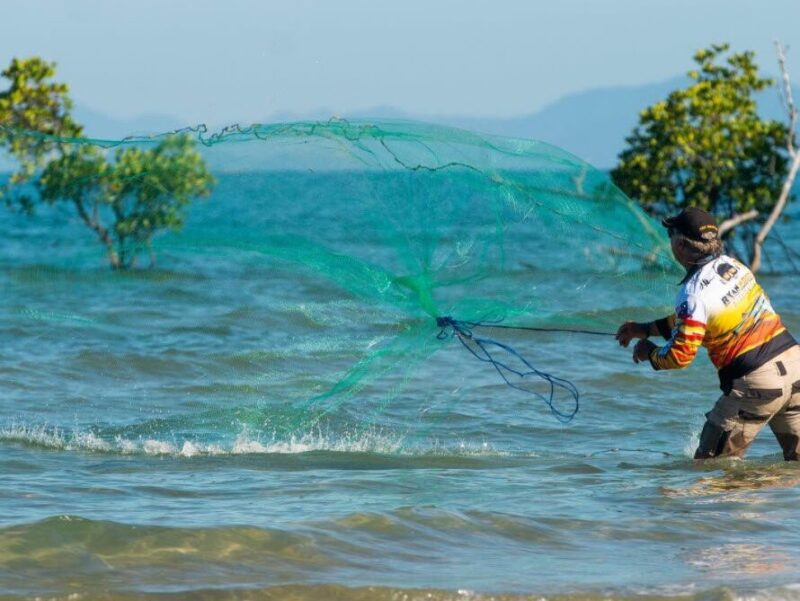
CHOOSING THE RIGHT CAST NET TYPE
Firstly there are three main types of cast net and these are used for different applications.
- Bottom pocket cast net
- Drawstring cast net
- Top pocket cast net
We demonstrate the use of each of them in a previous video called cast net types and their applications.
BOTTOM POCKET CAST NET
When choosing the right cast net for shallow water (less than 1 metre), you can’t go past a bottom pocket.
As the name suggests, these nets have pockets sewn into the lead line.
The lead line weights the net and it sinks to the bottom.
As you retrieve the net, the lead line drags along the bottom preventing bait from escaping.
They are then caught in the pockets
They need to be used in the shallows as they need to hit the bottom to work.
Common target species are mullet, garfish/ballyhoo, whiting, silver biddies/mojarra.
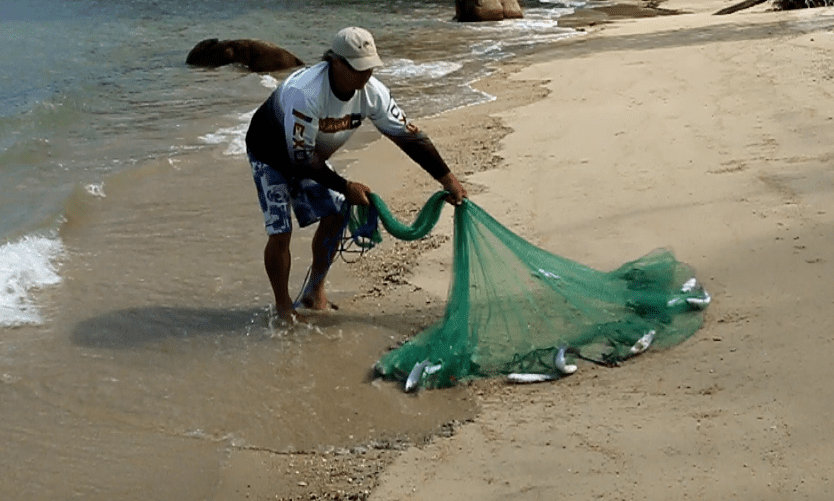
DRAWSTRING CAST NET
Choosing the right cast net for deeper water depends on how the net closes.
Drawstring cast nets work differently from a bottom pocket because they close under the bait into one big pocket.
The drawstrings pull the bottom of the net up.
Hence they work better in deeper water where they don’t hit the bottom.
Common target species are herring/threadfin.
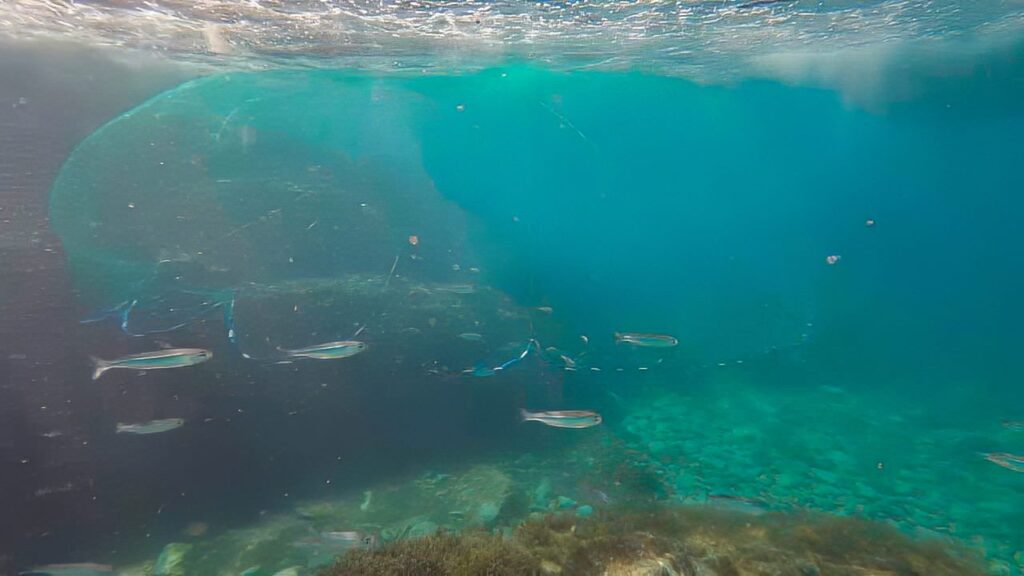
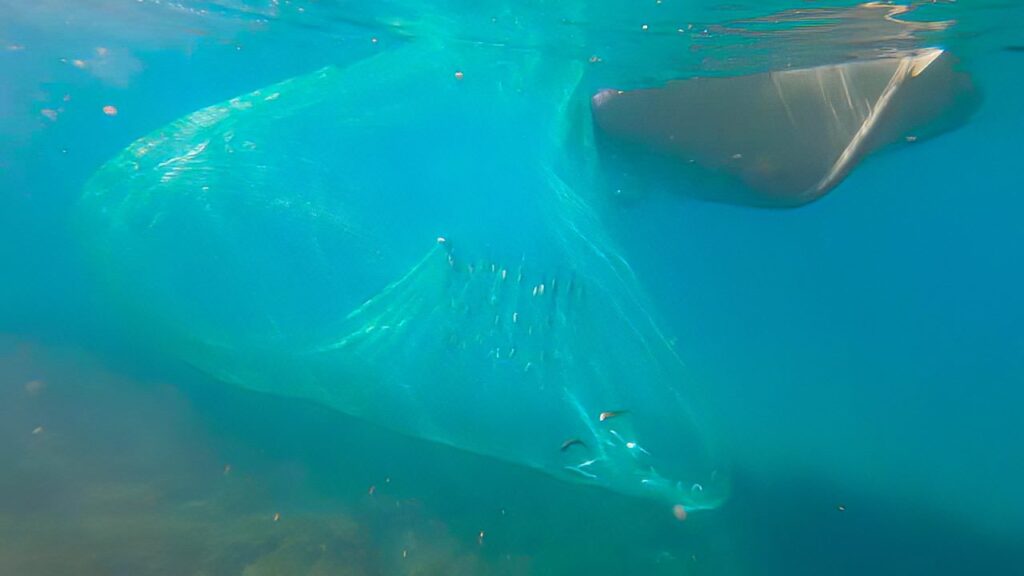
Choose a top pocket cast net if your target species are shrimp/prawns.
These nets are designed for critters that flick upwards, hence they get trapped in the top of the net.
Because the net opens at the top bait can be quickly emptied. Since picking them out of pockets is time-consuming.
Therefore it’s a big time saver over chasing prawns with a bottom pocket.
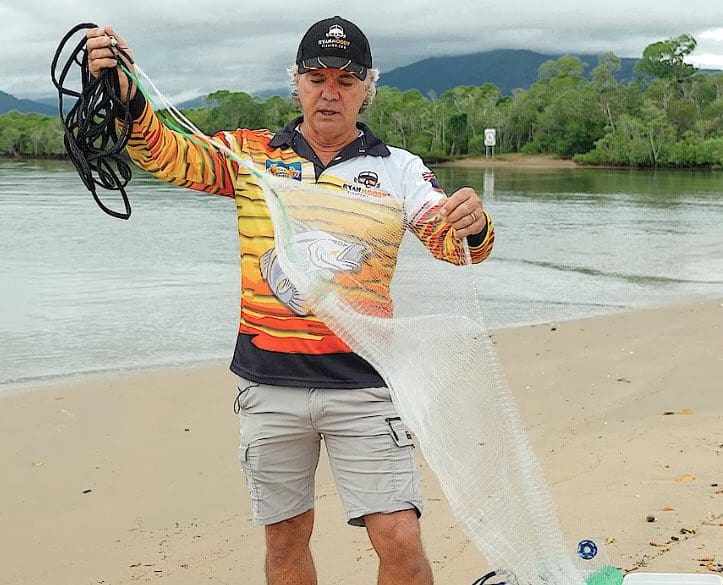
So in short, shallow water bottom pocket, over 1 metre drawstring, critters that flick, top pocket.
WHAT SIZE NET DO I NEED?
Once you’ve decided on the type of net, size is the next consideration.
This depends on two things.
- Size of the person
- Where will I be throwing the net.
Choosing the right cast for the person’s size is important as they are heavy!
Especially when bait are scarce and you may need to walk long distances or cast many times.
We do show you how to make catching them easier and quicker in our Locating Livies course.
However to give you some idea, an 8 foot cast net weighs around 3 kilos and a 12 foot can weigh over 5 kilos.
I find a 8 foot or 9 foot is perfect for me size wise when I’m on foot.
In addition, when I’m cast netting the estuaries for mullet, I don’t want a huge net to get stuck on snags and mangrove roots.
So an 8 foot for me is perfect.
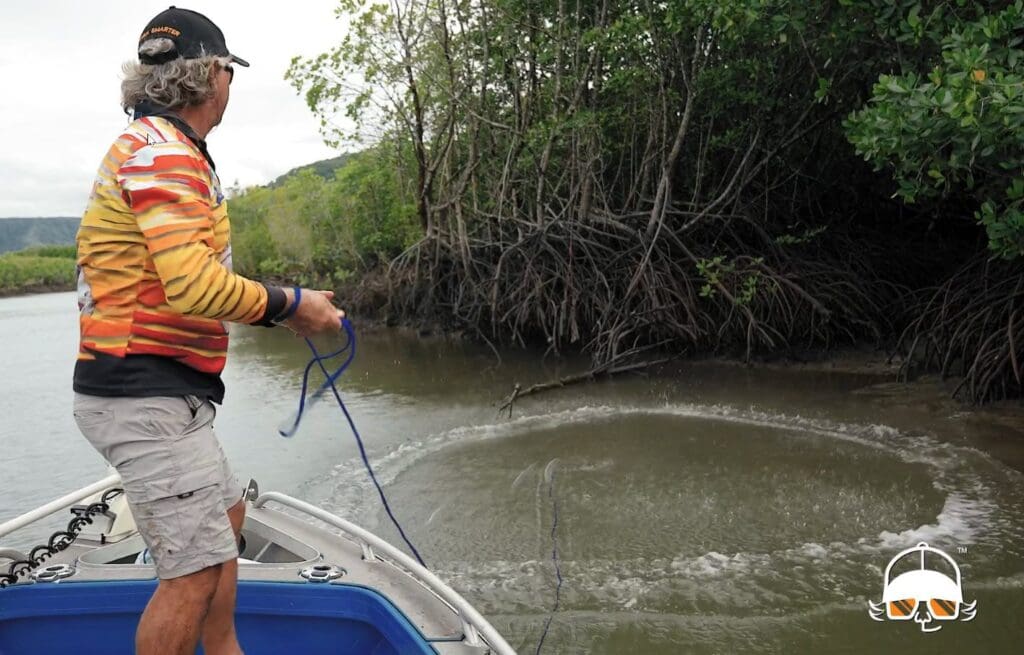
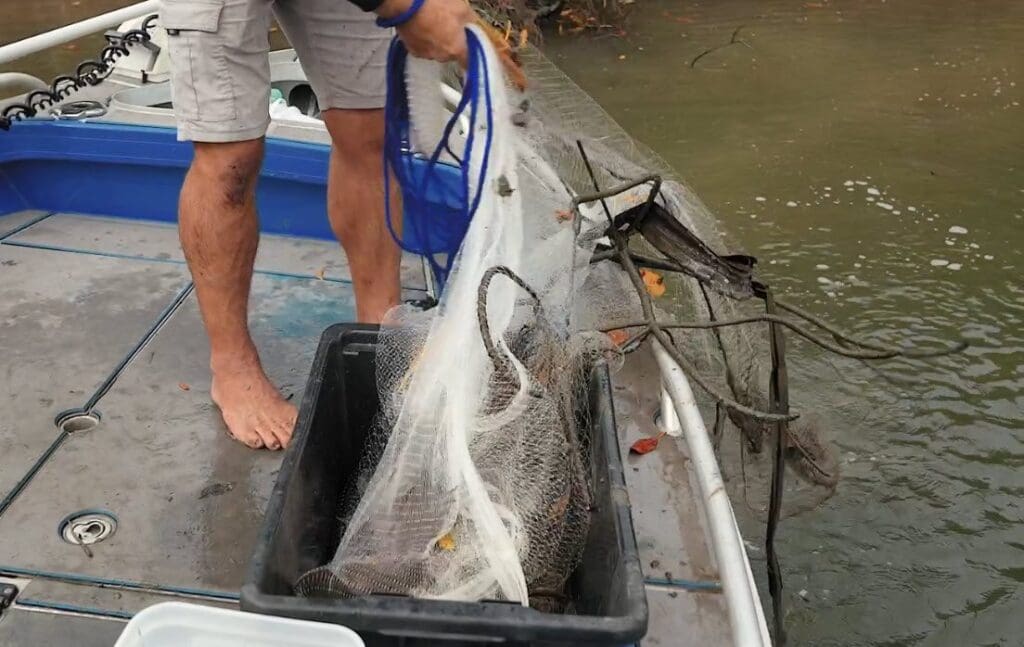

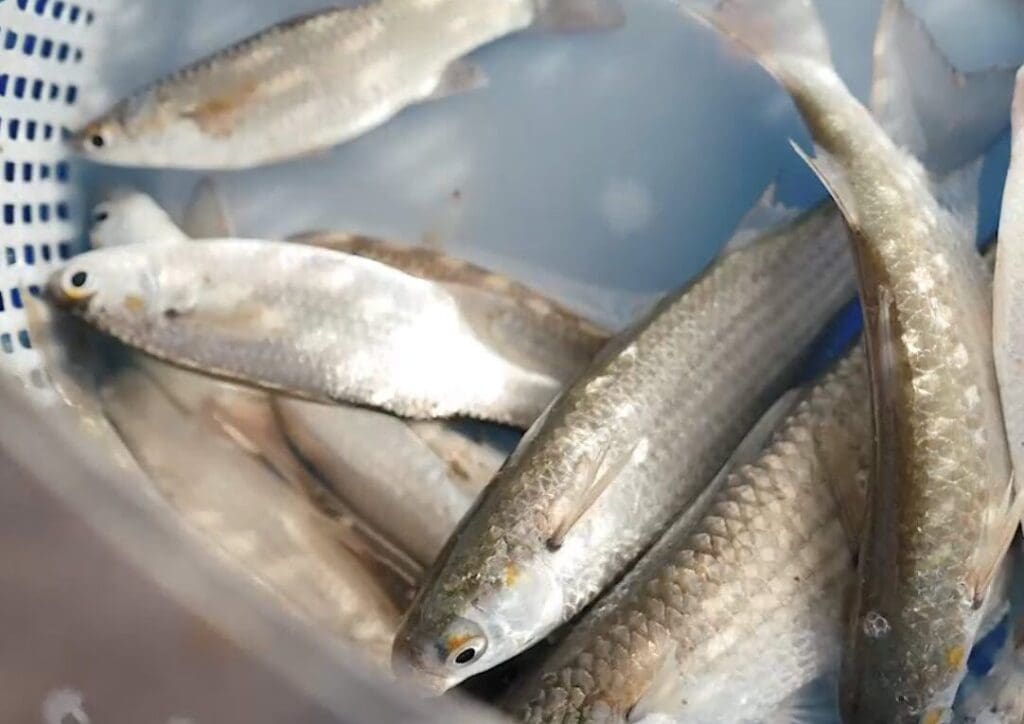
MONO OR NYLON NET
After 30 years using every imaginable cast net, I prefer mono (fishing line) nets.
The nylon (string) nets hold water and get heavier as you cast.
They also sink slower and are easier for the fish to see.
CHOOSING THE RIGHT CAST NET MESH SIZE
Mesh size really depends on the size of the bait you are chasing.
Here in Australia our ultimate target are large sportsfish species from 70 cm long and beyond.
Hence we don’t use small baits.
I therefore like to use a 1 inch mesh.
The smaller fish just tend to swim straight through.
What you do need to check is that the mono is good quality and a decent thickness.
Too thin and they just rip on the first obstacle and have no longevity.
You can usually tell from the price if it is good quality. Too cheap is usually poor quality.
Although a good custom made net has set me back around $400, these days you don’t have to spend that much.
Truth is I stopped using custom nets as my net maker stopped making them.
So I turned to production nets around the $130 to $200 mark.
I have since created my own line which you can Buy Here.
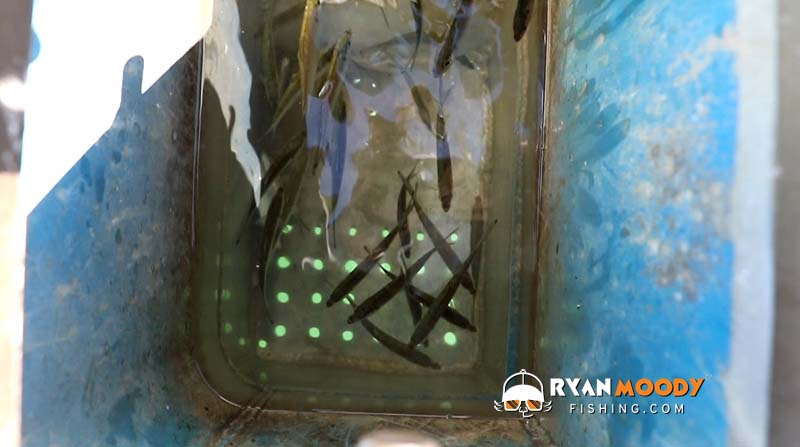
CHAIN OR LEAD LINE
When choosing the right cast net, you’ll need to decide chain or lead line.
Chain can be either galvanised or stainless steel, however, the stainless is much more expensive.
I find I rip the net before the gal rusts so for me I go for gal.
Chain sinks better and in my opinion is better for drawstring cast nets and also bottom pocket if you’re throwing in open country.
Because I use my bottom pockets around snags, I often opt for lead line as it is a bit less snaggy.
You’ll want to make sure they have a decent amount of weight.
Lighter (cheaper) nets sink more slowly and allow bait to escape underneath.
The chain on a good quality net will be fastened securely to the net and weigh around 5 kg for a 9 foot net.
KNOTS AND LINE CLASS
As we mentioned before, the line class of the mono needs to be strong, although most manufacturers don’t advertise the line class.
What they do mention is the knots. Double knots or double diamond are the way to go.
See below the knots are quite large for the line class, evidence they are double knotted.
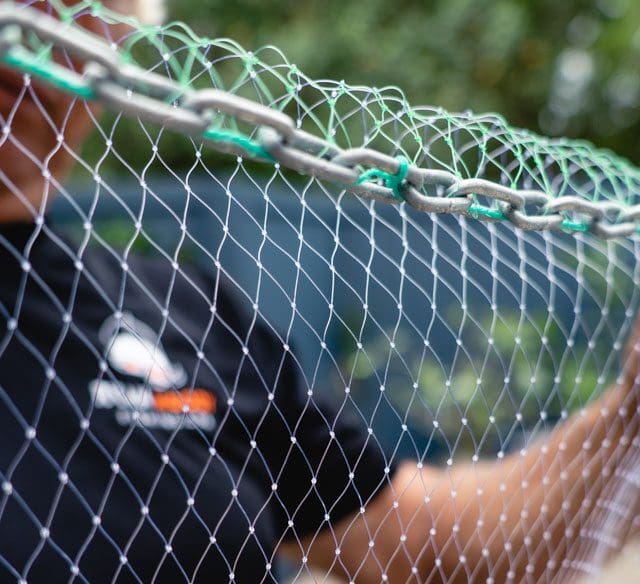
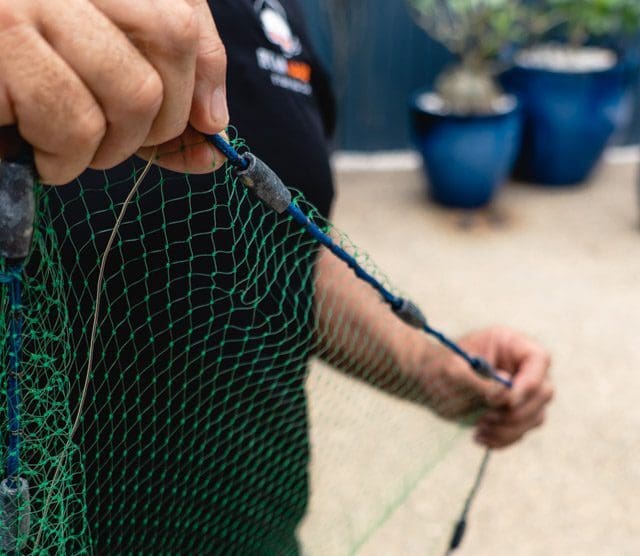
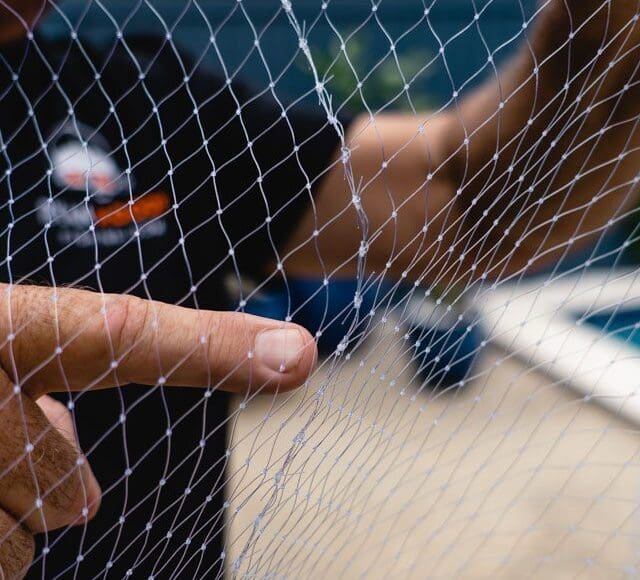
CHOOSING THE RIGHT CAST NET TYPE
CHOOSING THE BEST CAST NET
Well hopefully that helps you choose the right cast net for you and your target bait species.
Sadly we no longer offer cast nets for sale in our shop, however we do still have stocks of hooks and lures available. .
I’ve made a career out of catching clients trophy fish using live bait. And I hope you get some great fish too.
That said, there’s nothing I like more than wandering some of my favourite bait catching scenarios early in the morning.
Watching, observing, sighting and catching, epic live baits for the day’s fishing session.
If you’d like help getting more live bait in your net, and doing it much faster, check out out course Locating Livies.
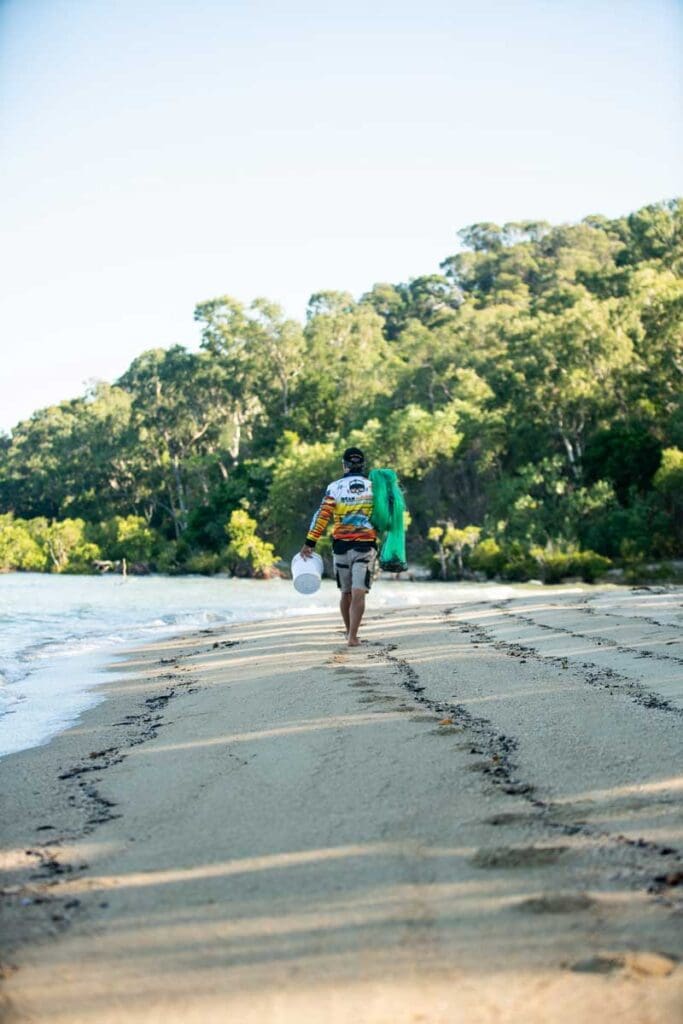
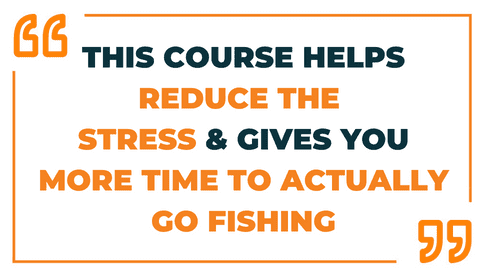
Robert Toscano - Locating Livies Member
Townsville, QLD
"I liked how Locating Livies showed so many different options for catching bait. Some of these places were right in front of my eyes. I highly recommend the course! Catching live bait can be one of the most frustrating & time-consuming things you do. This course helps reduce the stress & gives you more time to actually go fishing."



